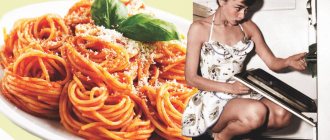Childhood and youth
The great writer was born in America, on the southwestern coast of Lake Michigan, not far from the cultural capital of the Midwest - Chicago, in the provincial town of Oak Park. Ernest was the second child of six children. The boy was raised by parents who were far from literary art, but wealthy: the popular performer Mrs. Grace Hall, who had retired from the stage, and Mr. Clarence Edmont Hemingway, who devoted his life to medicine and natural history.
It is worth saying that Miss Hall was a unique woman. Before her marriage, she delighted many cities in the United States with her sonorous voice, but left the singing field due to intolerance to stage light. After leaving, Hall blamed everyone for her failure, but not herself. Having accepted Hemingway’s marriage proposal, this interesting woman lived with him all her life, devoting her time to raising children.
But even after marriage, Grace remained a strange and eccentric young lady. Ernest was born until he was four years old in girls' dresses and with bows on his head because Mrs. Hemingway wanted a girl, but the second child was a boy.
In his free time, general practitioner Clarence loved to go hiking, hunting and fishing with his son. When Ernest was 3 years old, he got his own fishing rod. Later, childhood impressions associated with nature will be reflected in Hemingway's stories.
In his youth, Khem (the writer's nickname) voraciously read classical literature and composed stories. While at school, Ernest made his debut in a local newspaper as a journalist: he wrote notes about past events, concerts and sports competitions.
Although Ernest attended the local Oak Park school, his works often describe northern Michigan, a picturesque place where he went on summer vacation in 1916. After this trip, Ernie wrote a hunting story, “Sepi Zhingan.”
Among other things, the future laureate in literature had excellent sports training: he was fond of football, swimming and boxing, which played a cruel joke on the talented young man. Due to the injury, Hem was practically blind in his left eye and also damaged his left ear. For this reason, in the future the young man was not accepted into the army for a long time.
Ernie wanted to become a writer, but his parents had other plans for their son's future. Clarence dreamed that his son would follow in his father’s footsteps and graduate from medical school, and Grace wanted to raise a second Schubert or Beethoven, imposing on her child the music lessons he hated.
This mother’s whim affected Khem’s studies, as he missed a whole year of compulsory classes, studying the cello every day. “She thought I had abilities, but I had no talent,” said the elderly writer in the future.
After graduating from high school, Ernest, disobeying his parents, did not go to university, but began to master the art of journalism in the city newspaper of Kansas, The Kansas City Star. At work, police reporter Hemingway encountered such social phenomena as deviant behavior, dishonor, crime and the corruption of women; he visited crime scenes, fires, and visited various prisons.
However, this dangerous profession helped Ernest in literature, because he constantly observed the behavior of people and their everyday dialogues, devoid of metaphorical delights.
Cats
There were always cats in Ernest Hemingway's house - there were more than 30 of them and they had amazing names: Stray Cat, Crazy Christian, Ecstasy, Fat, etc.
Hemingway's most famous cat is Snowball, who had 6 toes on each paw due to a genetic mutation. This cat was given to Hemingway by an acquaintance - a ship captain.
Now the house of the famous writer has turned into a museum, but more than 10 cats still live in it, which is interesting - among them there are descendants of Snowball! The museum attracts tourists from all over the world not so much because of the heritage, but because of the cats.
Literature
After participating in military battles in 1919, the classic moved to Canada and returned to journalism. His new employer was the editors of the Toronto Star newspaper, which allowed the gifted young man to write materials on any topic. However, not all of the reporter’s works were published.
After a quarrel with his mother, Hemingway took things from his native Oak Park and moved to Chicago. There the writer continued to collaborate with Canadian newspapermen and at the same time published notes in the Co-operative Commonwealth.
In 1821, after his marriage, Ernest Hemingway fulfilled his dream and moved to the city of love - Paris. Later, impressions of France will be reflected in the book of memoirs “A holiday that is always with you.”
There he met Sylvia Beach, the eminent owner of the Shakespeare and Company bookstore, which was located not far from the Seine. This woman had enormous influence in the literary circle, because it was she who published James Joyce’s scandalous novel “Ulysses,” which was banned by censors in the United States.
Hemingway also became friends with the famous writer Gertrude Stein, who was wiser and more experienced than Hem and considered him her student all her life. The extravagant woman disdained the creativity of journalists and insisted that Ernie be involved in literary activities as much as possible.
Triumph came to the master of the pen in the fall of 1926 after the publication of the novel “The Sun Also Rises” (“Fiesta”) about the “lost generation.” The main character Jake Barnes (Hemingway's prototype) fought for his homeland. But during the war he received a serious injury, which forced him to change his attitude towards life and women. Therefore, his love for Lady Brett Ashley was platonic in nature, and Jake healed his emotional wounds with the help of alcohol.
In 1929, Hemingway wrote the immortal novel “A Farewell to Arms!”, which to this day is included in the required list of literature for study in schools and higher educational institutions. In 1933, the master composed a collection of short stories, “The Winner Takes Nothing,” and in 1936, Esquire magazine published Hemingway’s famous work “The Snows of Kilimanjaro,” which tells about the writer Harry Smith, who is looking for the meaning of life while traveling on safari. Four years later, the war work “For Whom the Bell Tolls” was released.
In 1949, Ernest moved to sunny Cuba, where he continued to study literature. In 1952 he wrote the philosophical and religious story “The Old Man and the Sea,” for which he was awarded the Pulitzer and Nobel Prizes.
"Snows of Kilimanjaro"
The image of the brave traveler worked so well for Gregory Peck that he played the main role in another film, based on the classic work of the same name - “The Snows of Kilimanjaro”. The film was directed by the American Henry King, whose works (Tender is the Night, The Song of Bernadette) are associated with the golden age of Hollywood, and the British Roy Ward Baker, known primarily for his films “The Sinking of the Titanic” and “You Don’t Have to Knock” - one of the best works by Marilyn Monroe.
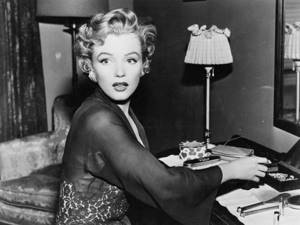
Marilyn Monroe in the film "You Don't Have to Knock"
The plot is based on the memories of writer Harry (Gregory Peck), who came on a safari to Africa. In search of material for his books, he travels around the world, accompanied by his wife. And at the foot of Kilimanjaro he was seriously wounded in the leg. Gangrene is developing - now he has little time left to put his thoughts in order. Before the face of death, the main character indulges in reflection: he remembers his past, his achievements, and his love, asking eternal questions about the meaning of human existence against the backdrop of a serene African landscape. Unlike the author of the book, the director decides to leave Harry alive.
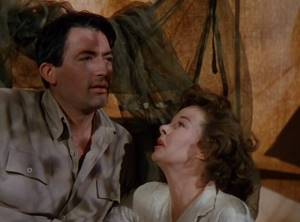
Still from the film “The Snows of Kilimanjaro”
Personal life
The personal life of Ernest Hemingway was so replete with all sorts of events that a whole book would not be enough to describe the adventures of this great writer. For example, the master was a thrill-seeker: at a young age he could “rein in” a bull by participating in a bullfight, and was also not afraid to be alone with a lion.
It is known that Hem adored the company of women and was amorous: as soon as a girl he knew showed her intelligence and graceful manners, Ernest was immediately amazed by her. Hemingway created for himself the image of a certain Marquis de Sade, talking about how he had many mistresses, ladies of easy virtue and black concubines. Whether this is fiction or not, biographical facts say that Ernest really had many chosen ones: he loved everyone, but called each subsequent marriage a huge mistake.
Ernest's first lover was the lovely nurse Agnes von Kurowski, who treated the writer in the hospital for his wounds during the First World War. It was this light-eyed beauty who became the prototype of Catherine Barkley from the novel “A Farewell to Arms!”
Agnes was seven years older than her chosen one and had maternal feelings for him, calling him “baby” in her letters. The young people thought of legitimizing their relationship with a wedding, but their plans were not destined to come true, as the flighty girl fell in love with a noble lieutenant.
The second chosen one of the literary genius was a certain red-haired pianist Elizabeth Hadley Richardson, who was 8 years older than the writer. She may not have been a beauty like Agnes, but this woman supported Ernest in every possible way in his activities and even gave him a typewriter. After the wedding, the newlyweds moved to Paris, where at first they lived from hand to mouth. Elizabeth gave birth to Hema's first child, John Hadley Nicanor ("Bumby").
In France, Ernest often visited restaurants where he enjoyed coffee in the company of his friends. Among his acquaintances was the socialite Lady Duff Twisden, who had high self-esteem and did not disdain strong words. Despite such provocative behavior, Duff enjoyed the attention of men, and Ernest was no exception. However, at that time the young writer did not dare to cheat on his wife. Twisden was later "recast" as Brett Ashley from The Sun Also Rises.
In 1927, Ernest began to become involved with Pauline Pfeiffer, Elisabeth's friend. Paulina did not value her friendship with the writer’s wife, but on the contrary, she did everything to win someone else’s man. Pfeiffer was pretty and worked for the fashion magazine Vogue. Later, Ernest will say that a divorce from Richardson will be the greatest sin of his entire life: he loved Paulina, but was not truly happy with her. From his second marriage, Hemingway had two children - Patrick and Gregory.
The third wife of the laureate was the famous US correspondent Martha Gellhorn. The adventurous blonde loved hunting and was not afraid of difficulties: she often covered important political news happening in the country and did dangerous journalistic work. Having achieved a divorce from Paulina in 1940, Ernest proposes to Martha. However, soon the newlyweds’ relationship “came apart at the seams,” since Gellhorn was too independent, and Hemingway loved to dominate women.
Hemingway's fourth betrothed is journalist Mary Welsh. This radiant blonde supported Ernest’s talent throughout the marriage, and also helped with publishing efforts, becoming her husband’s personal secretary.
In 1947 in Vienna, a 48-year-old writer falls in love with Adriana Ivancic, a girl 30 years younger than him. Hemingway was attracted to the white-skinned aristocrat, but Ivancic treated the author of the stories like a father, maintaining friendly relations. Mary knew about her husband’s hobby, but she acted calmly and wisely as a woman, knowing that the fire that arose in Hemingway’s chest could not be extinguished by any means.
Meeting of the famous writer Ernest Hemingway and a Hollywood actress
The fateful Marlene Dietrich met while traveling on an ocean liner. As Marlene recalled as a result, love happened at first sight and remained forever. And it was all the same that correspondence replaced meetings. As Ernest said, he and Dietrich loved each other very much, but never woke up together.
Rosstat: women in leadership positions earn one third less than men
How to Increase Team Resilience and Productivity While Working from Home: 4 Tips
Mimi Goodwin started teaching sewing online and made millions
Their meetings were very rare; Marlene considered the time spent without Hemingway to be a pain. But communication with the American writer has always been an inexplicable mystery for Dietrich. Their relationship remained platonic. Ernest Hemingway and Marlene Dietrich were closer in soul than the most passionate lovers.
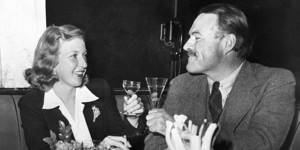
Death
Fate constantly tested Ernest's resilience: Hemingway survived five accidents and seven catastrophes, and was treated for bruises, fractures and a concussion. He also managed to recover from anthrax, skin cancer and malaria.
Shortly before his death, Ernest suffered from hypertension and diabetes, but was admitted to the Mayo Psychiatric Dispensary for “cure.” The writer’s condition only worsened, and he also suffered from manic paranoia about being watched. These thoughts drove Hemingway crazy: it seemed to him that every room wherever he was was equipped with bugs, and vigilant FBI agents were on his heels everywhere.
The clinic doctors treated the master in the “classical way”, resorting to electroconvulsive therapy. After 13 sessions, therapists made it impossible for Hemingway to write because his vivid memories had been erased by electric shock. The treatment did not help, Ernest plunged deeper into depression and obsessive thoughts, talking about suicide. Returning to Ketchum on July 2, 1961, after being discharged, Ernest, thrown “to the margins of life,” shot himself with a gun.
Sweater and beard
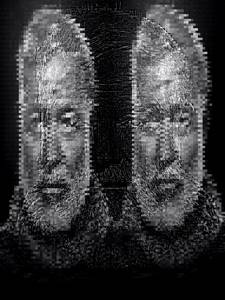
The writer always wore a beard and wore a knitted sweater. Intellectuals of the 60s admired him and imitated him. He was an idol, he was considered a romantic hero, and people wanted to be like him.
In a sweater, Hemingway saw not just a piece of clothing that fits a certain season, but an important detail in his image. In addition, the writer was a fashionista and also loved to wear loafers.
Soviet writer Sergei Dovlatov has said more than once that he wants to be like Hemingway and learn to write like him.
Facts from Hemingway's life
- The future writer received his name in honor of his grandfather.
- Ernest Hemingway's parents were wealthy people who lived in a 7-room private house in a prestigious area. His father was a successful doctor, and his mother was an opera singer.
- As Hemingway grew up, he repeatedly said that he did not like his name because he associated it with the hero of one of Oscar Wilde’s plays, a naive and stupid person.
- His mother dressed young Ernest Hemingway like a girl, and even cut his hair for the first time only when he was 6 years old.
- Hemingway once said in an interview that he hated his mother.
- As a child, he was forced to learn to play the cello, even though he had no musical talent.
- When Hemingway was 4 years old, his father began teaching him to hunt and fish. This had an impact on the writer’s entire life - he loved traveling to remote places, far from civilization.
- Ernest Hemingway had a very warm relationship with his grandfather. When the future writer turned 12 years old, he even gave him a hunting rifle.
- Hemingway's father committed suicide by shooting himself with a hunting rifle.
- As a child, Ernest Hemingway wrote notes and articles for the school newspaper. These were his first publications.
- After the outbreak of World War I, Hemingway wanted to volunteer for the front, but was rejected by the draft board due to a problem with his left eye.
- Health problems did not stop the writer, and he signed up as a volunteer driver for the Red Cross, going to Italy. There he helped search for and rescue the wounded, despite his injuries, for which he received the Italian Medal of Courage.
- Throughout his life, Ernest Hemingway came close to death many times. He was involved in more than ten accidents and disasters, was wounded twice while hunting, almost burned out in a forest fire, and in battle was wounded by a machine gun fire and received 273 mine fragments in his body.
- Hemingway's bullet-shattered kneecap was replaced with an aluminum prosthesis, causing him to limp for the rest of his life.
- During the war, Hemingway met Antoine de Saint-Exupery, who was already a famous writer.
- One day he won a bet on the shortest and most touching story, creating it from 6 words and winning. Since then, ultra-short story competitions have been held all over the world.
- Ernest Hemingway loved cats, of which he had more than 20. He once had to shoot his cat, which was hit by a car, to end its suffering, and he recalled this episode as one of the most difficult in his life.
- On the fronts of World War II, Hemingway was a war correspondent. He was almost put on trial for violating the Geneva Convention, according to which correspondents do not have the right to take up arms, which did not stop the writer from once opening fire on a German detachment with a machine gun. Subsequently, the matter was hushed up.
- The descendants of Snowball, Hemingway's beloved cat, who had 6 toes on his paws, now live in his house-museum in the USA. There are more than 40 of them, and most of them also have 6 toes. They are recognized as a US national treasure.
- Ernest Hemingway hated giving autographs, and few people were able to get them, which is why they were especially highly valued by fans of his work.
- The writer was terrified of speaking in public. Moreover, he repeatedly stated that he did not believe the sincerity of the praise of readers and critics.
- During his lifetime, Hemingway became famous for his recklessly brave actions - he participated in bullfights, entered a cage with lions, and entered the ring with the US boxing champion.
- He received his Nobel Prize in Literature for his philosophical story “The Old Man and the Sea.”
- Fans of Hemingway's work around the world affectionately call him "Papa Ham."
- In the 30s of the last century, an impostor posing as Hemingway traveled around the United States. He created scandals, signed autographs and wrote out bills in the name of the writer. He tried to catch him, but he failed.
- Ernest Hemingway's work was banned in Germany during the reign of Hitler and in Italy during the reign of Mussolini.
- In 1978, a Soviet astronomer discovered a minor planet named after Hemingway.
- One day, the writer tore out of the wall and stole a urinal from his favorite bar, where he had been a regular for many years. He stated that he left so much money there that the urinal now belongs to him. The bar owner did not object.
- Having acted as the author of the script for the film “Spanish Land,” Hemingway used all the proceeds from this work to purchase ambulances for the Spanish Republican Army.
- The writer's father, brother, sister and granddaughter also committed suicide.
- Once an annoying fan followed Hemingway for 3 months to get an autograph. He finally got it - the writer wrote to him "Victor Hill, a real son of a bitch who can't understand the word 'no'."
Cocktails

Ernest Hemingway had rather specific tastes. He loved “feminine” cocktails called “Mojito” and “Daiquiri”. According to psychologists, men who choose these types of cocktails are still children at heart.
Despite the fact that the writer could easily kill a bull in the arena, win a fight and experience admiration for war, he could not become a shoulder of protection for a woman.
He liked strong women who didn’t need protection: those who drove on the highway, drove a yacht, or took part in safari.







